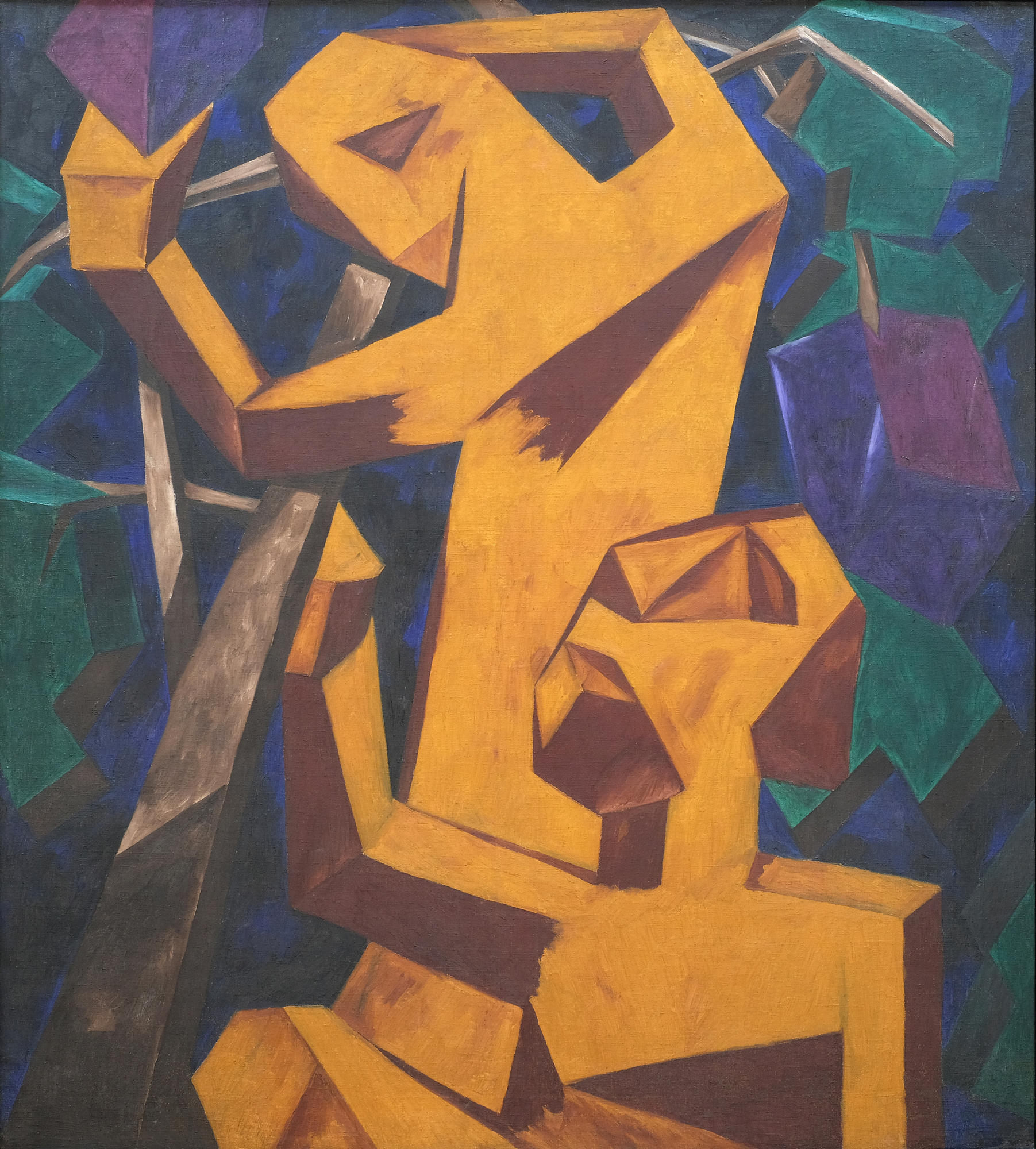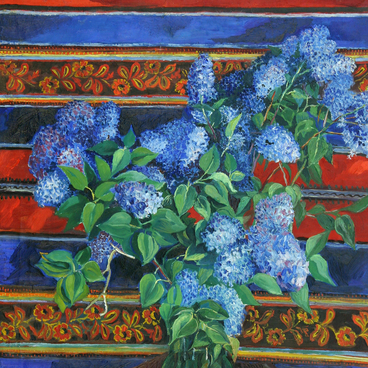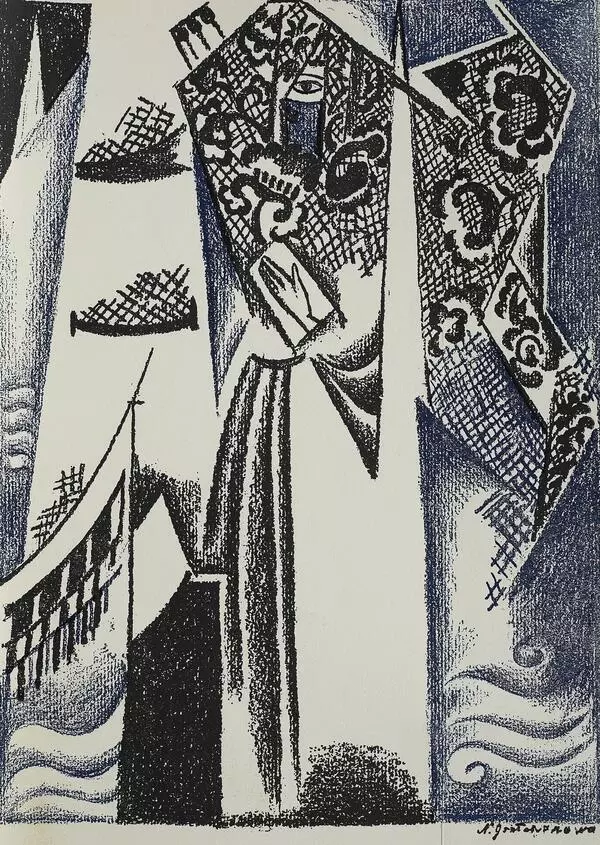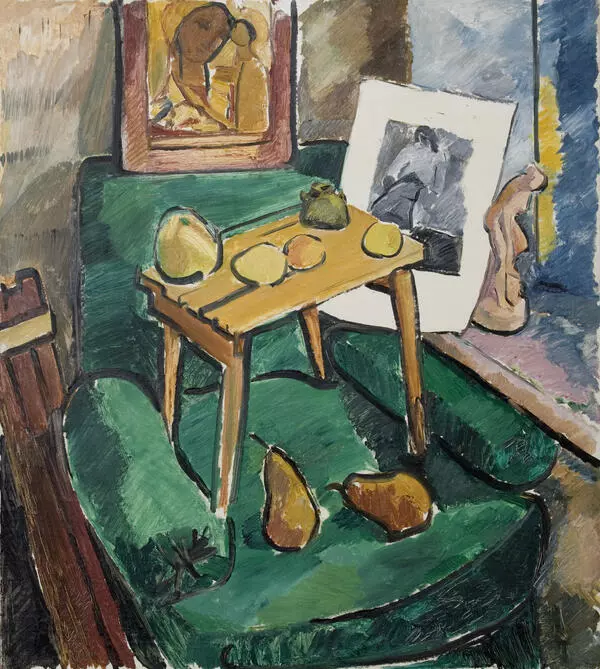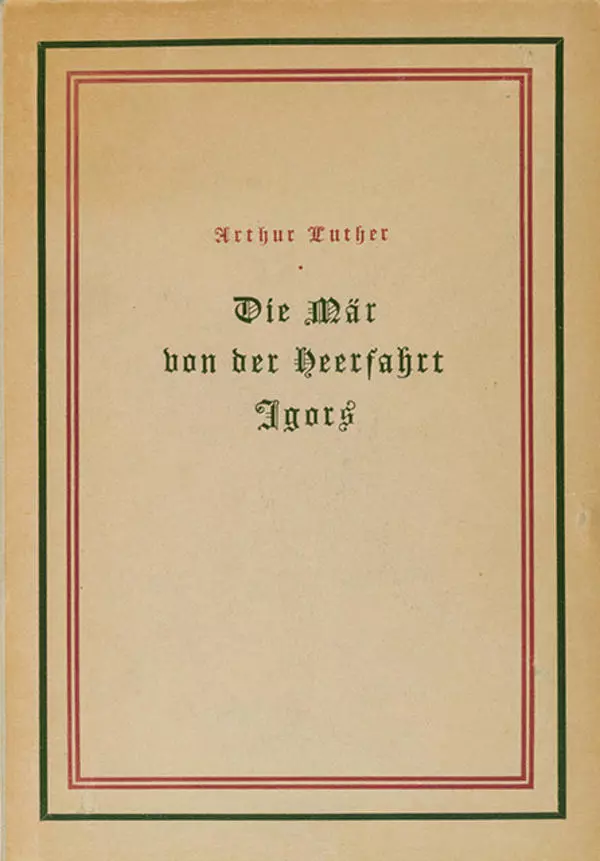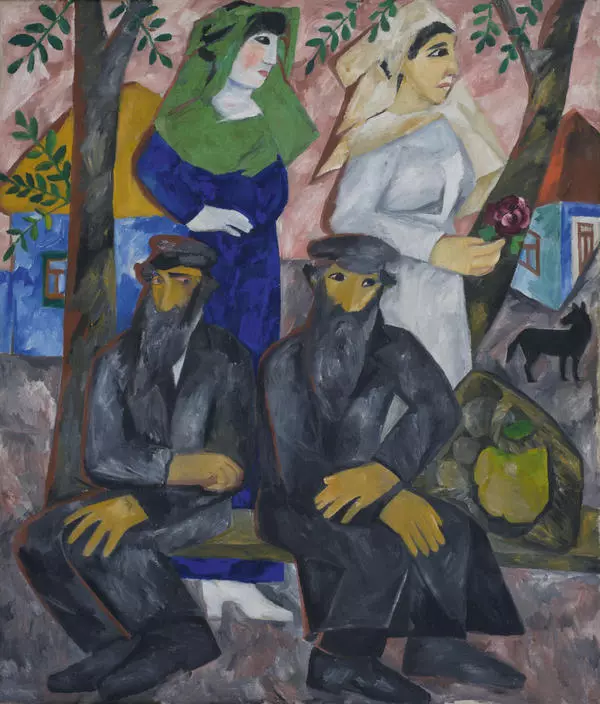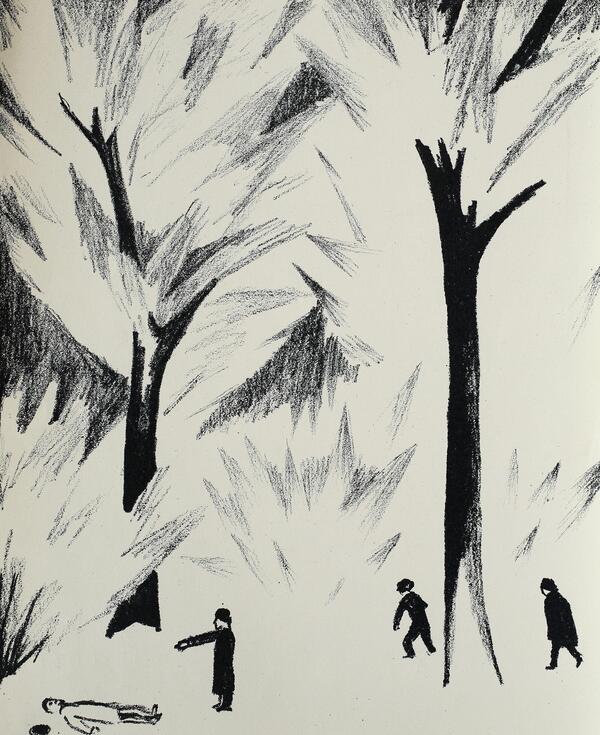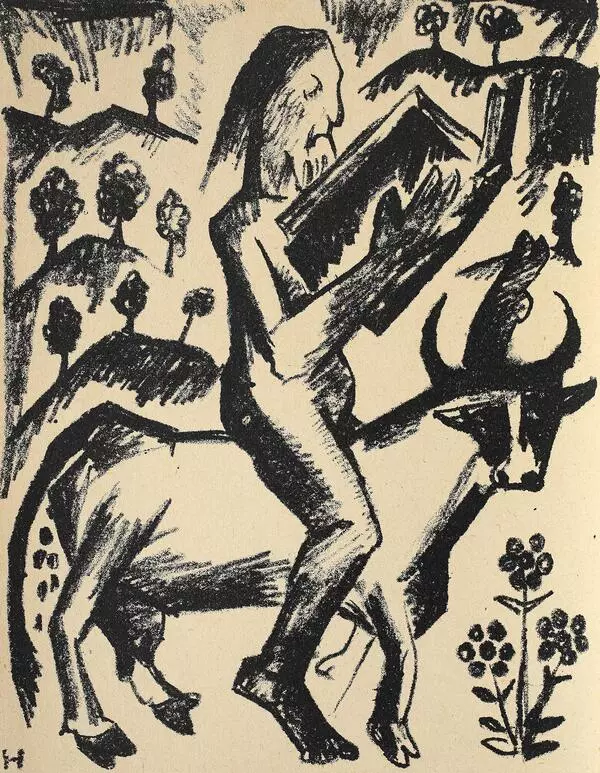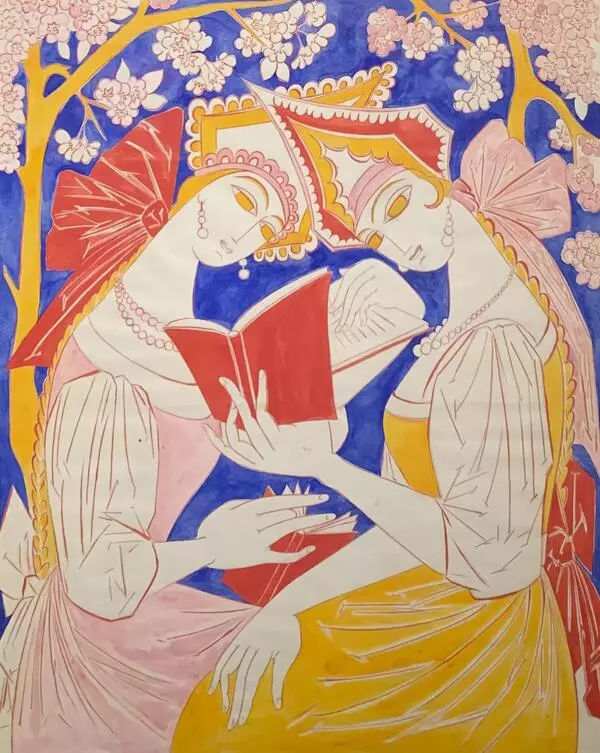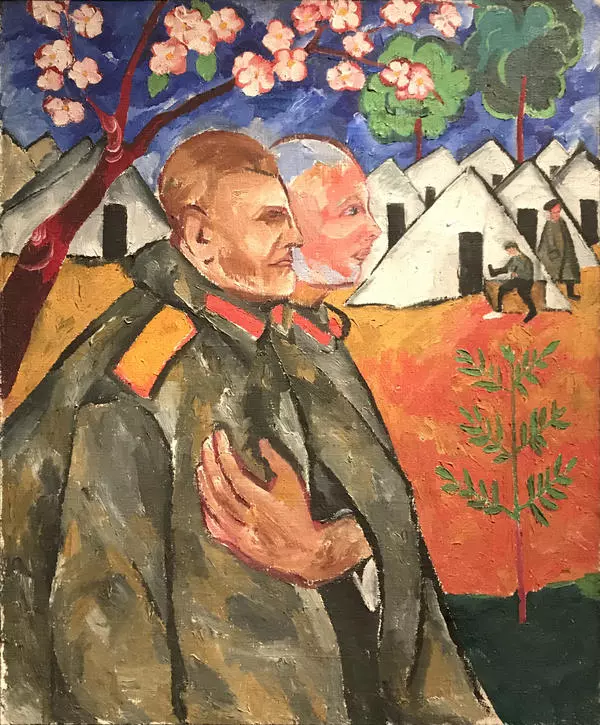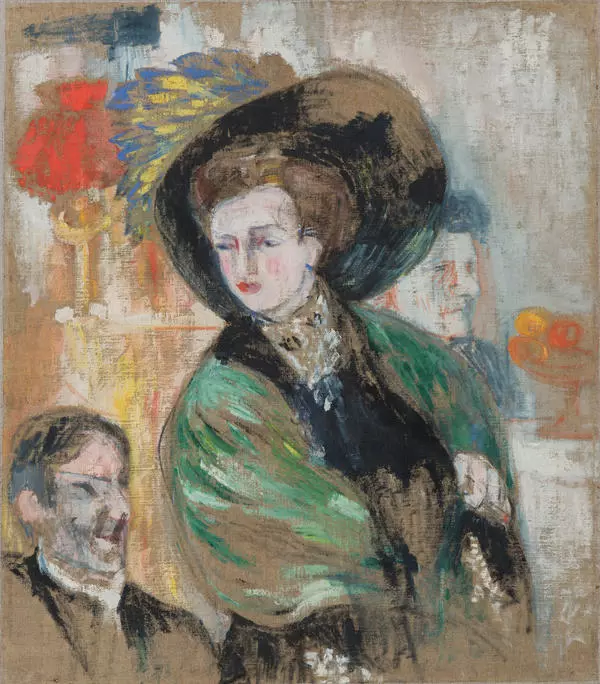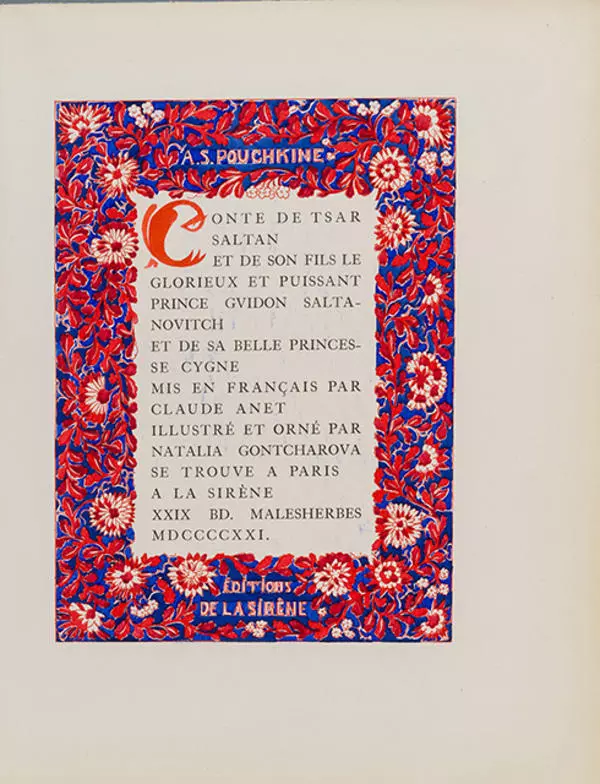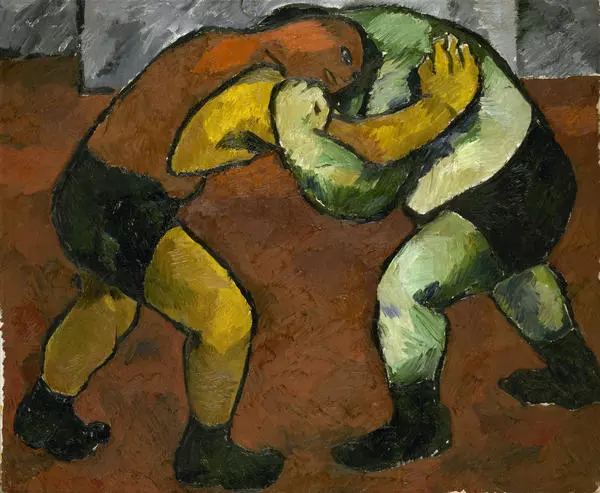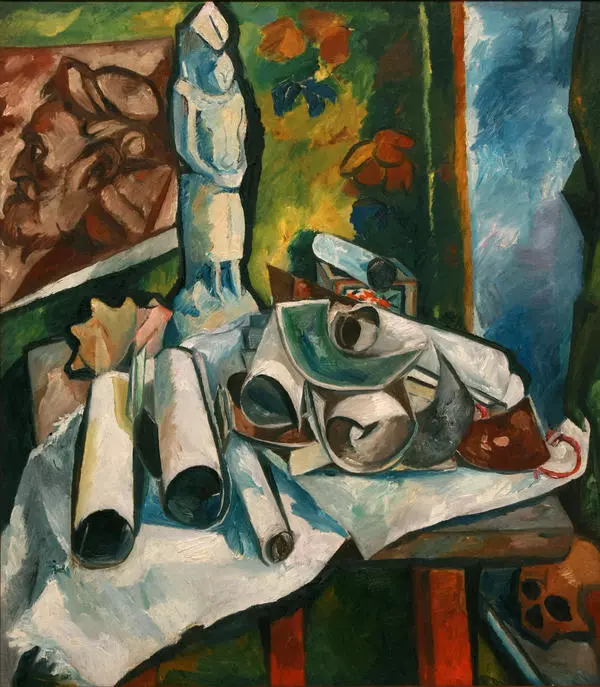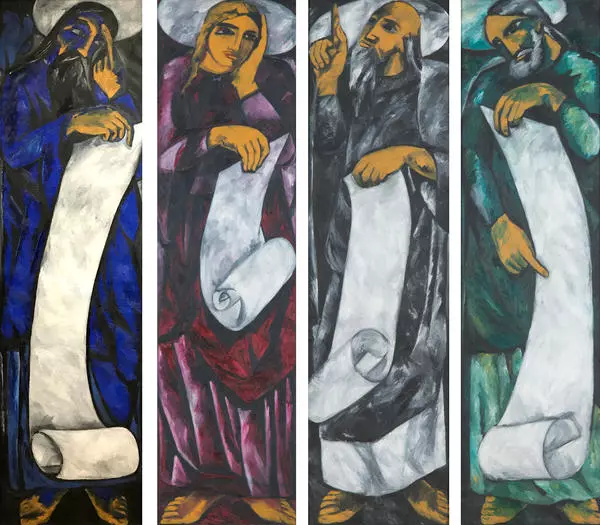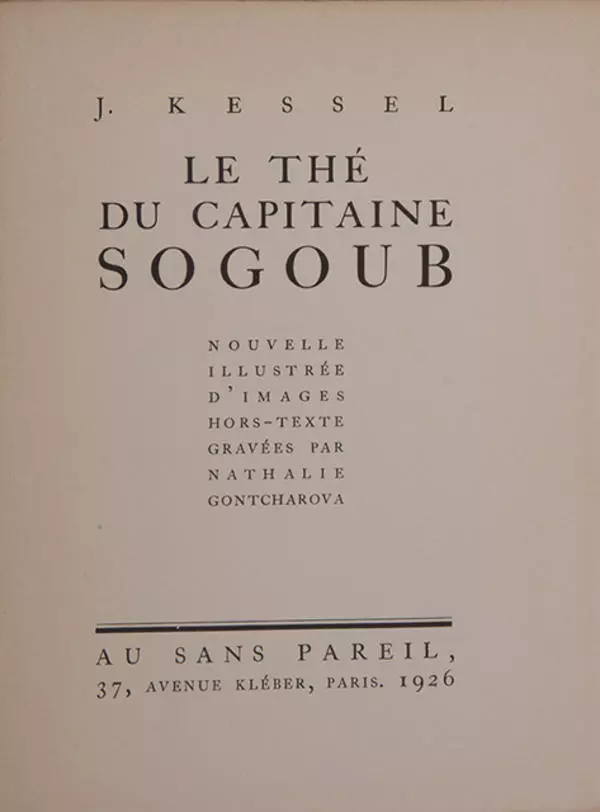Natalya Sergeyevna Goncharova is one of the three Amazons of the Russian art, strong-willed, rebellious, and singularly gifted artist who never stopped short of shocking the public. She managed to add a special national folkloristic note to the painting art of the early 20th century.
Natalya Goncharova was born in1881 near the city of Tula into a family of gentlefolk and was a great niece of Alexander Sergeyevich. Having spent her childhood among peasants, the young girl kept unfailing interest in their life and labor all her life. Traveling in Russia, she was highly observant of the local village life.
In 1901, Goncharova enrolled in the sculpture class of the Moscow School of Painting, Sculpture, and Architecture. Three years later she transferred to the painting studio to become a student of Konstantin Korovin, but never stopped doing sculpture. There she met Mikhail Larionov, future leader of the avant-garde art movement, and shared with him both her personal and professional life. From that time on, they were together in all their undertakings.
The world famous canvas Peasants Harvesting Grapes is painted in the so-called Jack of Diamonds style. It remained hidden in the Museum’s repository for more than half a century because of the negative attitude to modernism in the Soviet time. This work of art fully elucidates Goncharova’s concept of an archetypal model of the indigenous life filled with amazingly robust and wholesome spirituality.
The theme is developed in an utterly unconventional manner. The painting immediately calls to mind the works of Picasso, albeit in colors uncharacteristic of his paintings. Instead of ‘spreading the objects flat’ and ‘dissecting’ them on canvas as is usually done by the followers of the ‘analytical cubist’ tradition, Goncharova emphasized the solidity and massiveness of her human figures, and even the grape bunches resembling huge stone blocks.
The figures seem to be carved in wood or stone, which is hardly surprising if we recall that the artist had spent several years studying sculpture. Handling planar surfaces with ease, Natalya Goncharova ground her peasants the way stonecutters do.
The basic composition technique is the use of a planar surface as a certain ‘arena’ for the play of broken lines and modified shapes in the cubist style. The color scheme is similar to that used for posters with intentional domineering of the ocher-yellow hue. Its brightness and expressiveness are emphasized by the use of deep complementary colors chosen so as to intensify the main tone.
The canvas also contains a hidden biblical reference because the grape vine has been considered a symbol of Christ from the onset of the early Christian art, which suggests that the image should be interpreted as timeless.
Notably, the grapes harvesting motive is full of drama. The sharp outlines of deformed figures and the grave purple-blue tone reflect the premonition of tragic changes which would soon ruin the existing order of things, as the humankind indeed witnessed in the 20th century.
Natalya Goncharova was born in1881 near the city of Tula into a family of gentlefolk and was a great niece of Alexander Sergeyevich. Having spent her childhood among peasants, the young girl kept unfailing interest in their life and labor all her life. Traveling in Russia, she was highly observant of the local village life.
In 1901, Goncharova enrolled in the sculpture class of the Moscow School of Painting, Sculpture, and Architecture. Three years later she transferred to the painting studio to become a student of Konstantin Korovin, but never stopped doing sculpture. There she met Mikhail Larionov, future leader of the avant-garde art movement, and shared with him both her personal and professional life. From that time on, they were together in all their undertakings.
The world famous canvas Peasants Harvesting Grapes is painted in the so-called Jack of Diamonds style. It remained hidden in the Museum’s repository for more than half a century because of the negative attitude to modernism in the Soviet time. This work of art fully elucidates Goncharova’s concept of an archetypal model of the indigenous life filled with amazingly robust and wholesome spirituality.
The theme is developed in an utterly unconventional manner. The painting immediately calls to mind the works of Picasso, albeit in colors uncharacteristic of his paintings. Instead of ‘spreading the objects flat’ and ‘dissecting’ them on canvas as is usually done by the followers of the ‘analytical cubist’ tradition, Goncharova emphasized the solidity and massiveness of her human figures, and even the grape bunches resembling huge stone blocks.
The figures seem to be carved in wood or stone, which is hardly surprising if we recall that the artist had spent several years studying sculpture. Handling planar surfaces with ease, Natalya Goncharova ground her peasants the way stonecutters do.
The basic composition technique is the use of a planar surface as a certain ‘arena’ for the play of broken lines and modified shapes in the cubist style. The color scheme is similar to that used for posters with intentional domineering of the ocher-yellow hue. Its brightness and expressiveness are emphasized by the use of deep complementary colors chosen so as to intensify the main tone.
The canvas also contains a hidden biblical reference because the grape vine has been considered a symbol of Christ from the onset of the early Christian art, which suggests that the image should be interpreted as timeless.
Notably, the grapes harvesting motive is full of drama. The sharp outlines of deformed figures and the grave purple-blue tone reflect the premonition of tragic changes which would soon ruin the existing order of things, as the humankind indeed witnessed in the 20th century.
